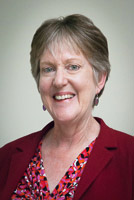
When the state takes over the parenting of a child, that parent has many faces, many hands and, hopefully, many hearts.
Pointing the way to a new and better child protection system, Commissioner Margaret Nyland wrote in her preface to The Life They Deserve
The new agency cannot operate in isolation. It should coordinate and collaborate with all other relevant departments and organisations, both government and non-government, to give children better outcomes. It must also be proactive and engage the community to play its part in developing programs and systems…
Many of the good things we see happening for children in state care, and we do see many good things happening in our work, happen when the hearts and the hands of adults come together to recognise and understand a child’s needs and stay together to work through to a good outcome. The joy for the child, but also for the adults, is palpable. It is one of the reasons we do the work we do.
Sadly, some of the worst results we see for children are when people and organisations fail to work together closely and respectfully in the child’s interests.
Our recent survey of the state of cooperation and collaboration in child protection asked respondents to rate levels of cooperation and collaboration. We chose 19 different relationships drawn from those identified in the work of Commissioner Nyland as being crucial to an effective child protection system. In analysing the results, we applied the standard that cooperation and collaboration should occur either ‘frequently’ or ‘always’. By that standard only one of those critical relationships was scored as achieving a pass mark by 30 percent of the respondents. Most of the others were scored much lower and many were in single figures. There were two areas that had improved since an identical survey conducted in June 2017 but it’s fair to say the improvements were small and were from a very low base. Allowing for the limitations of the survey, it is clear that respondents thought that we are still far short of Commissioner Nyland’s ideal.
Just as useful for me, were many of the comments. There were a few heartening stories of good and effective cooperation but there were many more of key stakeholders being omitted from case planning and decision making and important information remaining unshared. Many attributed the failures to workload issues but others referred to organisational culture, policy and training.
My office observed a sample of the Annual Reviews of young people in state care over a period of ten years to 2017. Annual reviews have been long mandated in the Department for Child Protection, and its earlier incarnations, in order to review the situation of each child and young person in state care. It is a time to reflect and review and plan for the child’s future outside of the day to day pressures. It is a time to place a child at the very centre of thinking and caring. Annual Reviews occurred for up to 80 per cent of children in care in most years but attendance at the planning sessions by other than social workers and supervisors was rare. In our report Office of the Guardian Audits of Annual Reviews 2007- 2017 we summarised:
Most offices have, over the 10 years of these audits, conducted annual reviews with only Department staff present with carers represented occasionally and birth parents and other professionals very much the exception.
If, as Margaret Nyland concluded, cooperation and collaboration are essential to an effective child protection system then major cultural and practice change is essential. I look forward to supporting and contributing to such relationships, as my office grows into its new roles.
